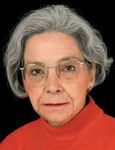Article
Surgical corrrection of hyperopia, astigmatism evolves wih excellent results
Chicago—Refractive surgeons should be confident about treating patients of all ages with hyperopia and hyperopic astigmatism because there are many treatment options that can produce satisfying results, according to Carmen J. Barraquer, MD, who received the Barraquer Award at the American Academy of Ophthalmo-logy annual meeting.

Available techniques for hyperopic correction include hyperopic keratomileusis (photoablation and thermocoagulation), hyperopic phakic lenses, phaco-refractive surgery, and synthetic keratophakia.
"It is important to choose the correct technique for each patient according to the patient's age, origin, and anatomic characteristics," said Dr. Carmen Barraquer, professor, the Barraquer Institute of the Americas, Bogota, Colombia.
In 1949 her father completed his doctoral thesis, which provided formulas to correct ametropia by changing the corneal curvature. Nine years later, he published a report on the method for cutting corneal lamellar grafts in frozen corneas. During 1958 to 1964, he developed the microkeratome. In 1964, he introduced keratophakia, a technique developed for aphakia at a time when IOLs were not successful, and in 1965 he performed the first freezing myopic keratomileusis in a patient, she said. Keratophakia, however, was abandoned in the 1970s and hyperopic keratomileusis, a technique that does not require a donor cornea, was developed. She showed a 3-minute historical film of his technique, including the lathing process beginning in the periphery and avoiding the central area.
He also designed more than 30 surgical instruments, wrote more than 300 scientific articles, and was the author of three books covering keratomileusis and keratophakia. He founded the Barraquer Clinic, the Barraquer Institute of the Americas, the School of Ophthalmology at the Barraquer Institute, and co-founded the first optometry school in Colombia.
Dr. Carmen Barraquer comes from a distinguished family of ophthalmologists. Her great-grandfather, Jose Antonio Barraquer, MD, and her grandfather, Ignacio Barraquer, MD, were ophthalmologists, as are her uncle Joaquin, as well as two brothers, Francisco and José Ignacio, and two cousins, Elena and Raphael. The fifth generation in the family is represented by two second cousins, Juan Pedro Alvarez, MD, and Javier Elizalde, MD. Dr. Carmen Barraquer followed in her father's footsteps, receiving her medical degree from Javeriana University, Bogota, in 1972 and completed her residency in ophthalmology at the Barraquer Institute in 1976.
Hyperopic LASIK
LASIK, the keratomileusis technique performed with a laser, has many distinct advantages over the previous keratomileusis techniques including:
She presented a retrospective analysis of LASIK in eyes treated for hyperopia and hyperopic astigmatism and followed for 5 to 8 years. Two surgeons treated 74 eyes of 41 patients between 1997 and 1999 using a "positive cylinder ablation" on the periphery of the cornea. Patients were between 8 and 26 years (mean, 14 years). They used a 6.5- to 7-mm optical zone and attempted correction with cycloplegic refraction. Eight eyes in the series were anisometropic.
Newsletter
Don’t miss out—get Ophthalmology Times updates on the latest clinical advancements and expert interviews, straight to your inbox.




